16/05/24 - Scottish red beard Vince Mackintosh awarded in Scottish pre-65!
So stingy that you don't want to spend on two shock absorbers? An old anecdote associates the Scottish people with a particular predisposition for saving, therefore seeing that the winner of the prize for the best performance with a "rigid" motorbike - as it is indicated because it has no rear suspension - in the recent Scottish Pre-65 was the Scotsman Vince Mackintosh, we jokingly wanted to ask him.
The fifty year old who lives a stone's throw from the Forest Gate sections of the super classic 6 Days, willingly told us his story and his passion for our sport.
Together with his second wife Mandy he shares a sporting life in the surrounding nature with hiking, as well as cycling both on the road and off-road mountain biking. Life already put him to the test six years ago, when he lost his first wife - with whom he had 2 children - to fulminating cancer, but he slowly recovered from the hard blow and returned to cultivating his greatest passion , which could not be anything other than the Trial, for a person who lives a few kilometers from Fort William.
He has just returned from the "eight" days of Scotland, because as usual for several champions or even medium-skilled pilots, at the beginning of May the appointment is for both competitions: the two-day pre-65 and the 6-day, interspersed with a day of rest in which they appear in the main street of Fort William, for the traditional parade.
Vince raced the first on a 1950's James around 200cc, rigid. For the 6 days he chose a Montesa Cota 260 and, holding on in the hell of Thursday, with extreme weather conditions, he reached the end, albeit in 190th position.
His red beard reminds us a lot of Ivan Graziani's song, even if on that occasion the character was Irish, always of Celtic stock in any case.
If in the Six Days the character can go unnoticed, just one of the many brave people who try and manage to finish it, for his undertaking in pre-65, deserves special attention.
Contacted on Facebook, he was willing to be interviewed on the phone, and here we are.
Vince, you live a stone's throw from the Six Day Forest gate areas, so do you go to train there all year round?
No, this is not possible. They are private lands that are only authorized once a year for the race.
Where do you train then?
I have permission with a local landowner to train on a fairly large area near Kinlockleven, not the famous Pipeline unfortunately, but not far away. However it is about 1 hours drive from my house. I am fortunate that I have a small area at my house where I can test my bikes before Trial and after any work or modifications carried out.
Are there many of you who practice Trials in Scotland?
Maybe about 200 to 250 competitive Trial riders. About 120 that I know of who compete regularly in the championships. There are two national championships, one for modern motorcycles and one for classics. In modern ones there are 4 levels. In the classic ones 2 with a division between pre-65 and pre-80. In modern Trial I am the current Over 40 Scottish Clubman Champion, Now I race in the Over 50 championship and in the Classic Pre 65 A – Route championship.
Knowing where you live, finding out about the Trial wouldn't have been difficult, when did it happen?
Indeed, my father, a passionate practitioner, bought my older brother and me a Malaguti 50cc to share in the 1980s, when I was 9 or 10 years old. But I started in Trial because I had a cousin - who suddenly passed away in a motorcycle accident at the age of 21 - who really wanted to participate in the Six Days, I was very close to him, even though I was 9 years younger and so I decided to do Six Days myself a few years later.
With which bike?
My father helped me buy a Montesa Cota with two shock absorbers and with that I started trying my hand at Trials, but my first bike with mono was a Fantic 241. Then I got a Gas Gas, one of the first and with that I went to the Six Days.
How many editions of the Six Days have you ridden? What was your best placing?
I rode 18 editions, finishing 16. I retired twice due to mechanical problems, in the first and third. Twice I ended up in the First Class Award. The best finish was a 128th place.
Virtually all the latest editions?
Almost all. Not in 2018 when my wife was diagnosed with cancer and in another two years because I was on a military mission in Afghanistan.
What is your job? The professional soldier?
Not anymore, now I work on my own as a general maintenance worker: from the gardener to the repairer of household appliances or mechanical parts.
This explains the project James, how did you come up with it?
I have always liked chasing new challenges, new goals, so I also started participating in the Pre-65 with a Triumph Tiger Cub in 2015. It was 2019 that I was intrigued by rigid frame motorcycles riding the Trial and I wanted to try it. I immediately tried to look for some to buy in England, which in any case would have meant at least a 4 hour drive from where I live to view it, just for the North of England.
I don't think there are many on the market or am I wrong?
True, I had looked at a BSA Bantham rigid but it wasn't in good shape and I would also have to find some parts as well as a series of jobs. Then there was covid, so everything stopped for a year. In the end, I accepted the risk of making the purchase only by looking at photos and bought a James with a Villiers engine sent to me, but only two years ago.
Was it as you expected? Was this what you wanted?
Enough, but for me it was important that the engine was powerful, given the displacement of only 197cc, so I turned to my friend Steve Gollings of Villiers Services for some advice on how to get the most horsepower from that engine, compatible with use for Trial.
Can you give us some technical features?
It is a 1953 James Captain Rigid (J9 Replica), nickname “The Bronco” becuase people say it’s like I’m riding a bucking bronco. EEngine Villiers Mk 6E 197cc, gearbox Villiers 3 speed, clutch basket modified from a Villiers 9E and Yamaha TY175. Forks 1953 James Model 6, spring only, no damping . Tyres Front 21” Michelin Trial Competition, Rear 18” IRC Trial . Wheels Standard 1953 hubs fitted with original adjustable cone bearings, Central Wheel Components Rim and Spokes. Carburettor AMAL 600 series. Ignition Electrix World . Controls Vintage Renthal handlebars, original levers and throttle. Bashplate engineered and manufactured by myself. Special engine case spacers engineered and manufactured by myself. Many bespoke spacers to ensure engine, chain and wheel alignment is correct - Made in England, Rebuilt in Scotland (a moto that I use for the British bikes that I build)
And you had satisfaction with this year's race, right?
Yes, I had two objectives: to average less than one penalty per section and to place among the top 100. I finished 97th with 54 penalties, out of 60 sections, and first of the rigid bikes with displacements under 250cc.
Goals for the future?
I would be interested in going with this bike to the Costa Brava at the two days in November, this year, I don’t believe anyone has ridden a Rigid at the Costa Brava before, while for next year at the pre65 Scotland the challenge could be to still race with a Rigid but with a larger displacement. Mostly though just to continue the passion of building and riding my bikes in Trial for enjoyment.
Last but not least, anyone to say thank you?
Yes, please. I would like take this opportunity to thank some people for life in Trial.
Firstly my amazing wife Mandy for all her support for me to continue riding Trial, my late father for introducing me to motorcycles, my mum who used to drive me to Trial in the early days when my father could not.
Sandy Mack for adopting me into the Army Trial team, my very good friends and ridding companions Phil Wiffen and William Rhodes.
All my friends and family who have and continue to support me in Trial and thank you to the Pre 65 Scottish committee for an excellent running of the event.
---------------------------------------------------------------------------------------
For those wishing to delve deeper, here is a brief summary of what the James motorcycle manufacturer was, as specified by their official website.
Harry James began making Ordinary bicycles (Penny Farthings) in around 1880. The company was floated on the stock market in 1897 with Harry James as the first managing director. He retired in 1898.
The first James motorcycles did not appear until 1902. The Model A was a motorised bicycle fitted with a Minerva engine, clipped forward of the front downtube, which drove the rear wheel via a twisted leather belt. The 1902 James Model B used a Derby motor fitted within the frame triangle driving the rear wheel via a friction roller.
For 1903 James they used Minerva engines and in 1904 changed to F.N engines and bolted them into what is claimed to be the first loop frame, which provided a sturdier mounting.
In 1908 James produced a remarkable "Safety" model in collaboration with an engineer named Renouf. Both wheels were carried on outrigger spindles and featured internal expanding brake shoes. The engine featured inlet and exhaust valves working one inside the other - the exhaust valve being described as "tulip shaped". A lever altered the valve lift as a means of regulating speed. The saddle was carried on long leaf springs.
The model was updated for 1910 - 11 and featured what is claimed to be the first saddle tank. Sadly neither machine seems to have been a commercial success and there are no records of survivors.
The first James two stroke appeared around 1913 and the company had, by then a fair reputation for well made and sturdy machines, with models suitable for solo or sidecar work.
During the First World War James supplied some machines for military service.
After the War, when production picked up, they produce a line of well made machines that earned the factory a reputation for quality and value.
The catalogues show side valve and overhead valve models throughout the capacity range and, in 1928 - 31 a speedway model using the 500cc V-twin ohv engine in a stripped and strengthened frame. The James all metal clutch was much appreciated, by competition riders, for it's ability to endure sustained abuse without fade.
From 1934 the factory produced only lightweight two-strokes which saw them through the low years of the 30's. In the Second World War they produced only two models - an autocycle and, for the government, the James M.L.
The M.L (Military Lightweight) was a development of a pre-war design adapted for military use with the intention that it be dropped from an aircraft for use in the period after the D-Day landings to allow airborne troops greater mobility. The M.L. was nicknamed the Clockwork Mouse.
After the war production was limited by raw materials shortages and the need to consign almost all production to the export market. There were only two models ready for production - the autocycle and the M.L. Both models were developed a little over the next couple of years but it was not until the 1949 season that new models became available.
In the early fifties the company was bought by A.M.C. the makers of Matchless and AJS motorcycles. They bought also the Francis-Barnett company and the next few years saw considerable badge-engineering although, right to the end, each make kept some models distinct from the other.
A full range of models was produced through the fifties and sixties in capacities up to 250cc and the range included a scooter to try to capture some of that market which had blossomed in the late fifties. Unfortunately it was the wrong design too late and though a wonderful machine it must have cost the company dear in development.
The James was known, post war, as a ride to work machine. There were a couple of sporty models but in the main they were honest, reliable, well designed bikes with few frills.
The decision, by A.M.C., to design and build their own range of two stroke engines has been criticised by many. Costs will have been considerable. The programme began in the mid-fifties when motorcycle sales were buoyant and both James and Francis-Barnett made use of them in large numbers, but the engines did not have much, if any, advantage over their Villiers equivalents and reliability was questionable.
Around 1962 some of the engines (150cc and 199cc anyway) were assembled by Villiers in the hope, presumably, that the two-stroke experts could put right some of the faults.
When the factory gates finally closed in 1966 it brought to an end a long line of highly regarded motorcycles.
---------------------------------------------------------------------------------------
Lo scozzese dalla barba rossa Vince Mackintosh premiato nella Pre-65 scozzese!
Così avari da non voler spendere per due ammortizzatori? Un vecchio anettodo associa al popolo Scozzese una predisposizione particolare al risparmio, dunque vedendo che a vincere il premio per la miglior prestazione con una moto “rigida” - come viene indicata in quanto priva della sospensione posteriore - nella recente Scottish Pre-65 è stato lo scozzese Vince Mackintosh, abbiamo voluto, scherzosamente, chiederglielo.
Il cinquantenne che vive a due passi dalle zone del Forest Gate della super classica 6 Giorni, ci ha raccontato volentieri la sua storia e la sua passione per il nostro sport.
Insieme alla sua seconda moglie Mandy condivide una vita sportiva nella natura circostante con escursioni a piedi, oltrechè giri in bicicletta sia su strada che in mountain bike fuoristrada.
La vita lo ha già messo alla prova sei anni fa, quando perse la prima moglie – dalla quale ha avuto 2 figli - per un cancro fulminante, ma lui si è ripreso piano piano dal duro colpo ed è tornato a coltivare la sua più grande passione, che non poteva essere altro se non il Trial, per una persona che vive a pochi km da Fort William.
E' appena reduce dalla “otto” giorni di Scozia, perchè come consuetudine di diversi campioni o anche piloti di medie capacità, a inizio maggio l'appuntamento è per entrambe le competizioni: la due giorni pre-65 e la 6 giorni, inframezzate da un giorno di riposo in cui si sfila nella strada principale di Fort William, per la tradizionale parata.
Vince ha corso la prima con una James di circa 200cc degli anni '50, rigida. Per la 6 giorni ha scelto una Montesa Cota 260 e, tenendo duro nell'inferno della giornata di giovedì, con condizioni atmosferiche estreme, è giunto alla fine, seppur in 190-esima posizione.
La sua barba rossa ci ricorda molto la canzone di Ivan Graziani, anche se in quell'occasione il personaggio era irlandese, sempre del ceppo celtico in ogni caso.
Se nella Sei Giorni il personaggio può passare inosservato, uno dei tanti coraggiosi che si cimentano e riescono a finirla, per la sua impresa nella pre-65, merita un'attenzione speciale.
Contattato su Facebook, è stato ben disponibile di venire intervistato al telefono, ed eccoci qua.
Vince, tu vivi da un passo dalle zone del Forest gate della Sei Giorni, quindi vai ad allenarti lì tutto l'anno?
No, questo non è possibile. Sono terreni privati che vengono autorizzati solo una volta l'anno in occasione della gara.
Dove ti alleni allora?
Ho il permesso di un proprietario terriero locale per allenarmi su un'area abbastanza vasta vicino a Kinlockleven, purtroppo non la famosa Pipeline, ma non lontano. Comunque è a circa 1 ora di macchina da casa mia. Ho la fortuna di avere una piccola area a casa mia dove posso provare le mie moto prima del Trial e dopo ogni lavoro o modifica effettuata.
Siete molti che praticano Trial in Scozia?
Forse circa 200-250 piloti di Trial competitivi. Sono circa 120 quelli che conosco che gareggiano regolarmente nei campionati. Esistono due campionati nazionali, uno per le moto moderne e uno per le classiche. In quelli moderni ci sono 4 livelli. In quelle classiche 2 con divisione tra pre-65 e pre-80. Nel Trial moderno sono l'attuale Campione Scozzese Clubman Over 40, ora corro nel campionato Over 50 e nel campionato Classic corro nella Pre 65 A.
Sapendo dove vivi, scoprire il Trial non sarà stato difficile, quando è successo?
Mio padre, infatti, un appassionato praticante, comprò a me e a mio fratello maggiore una Malaguti 50cc da condividere negli anni '80, quando avevo 9 o 10 anni. Ma ho iniziato nel Trial perché avevo un cugino - scomparso improvvisamente in un incidente in moto all'età di 21 anni - che voleva tanto partecipare alla Sei Giorni, gli ero molto legato, anche se avevo 9 anni di meno e così ho deciso di realizzare io stesso il suo sogno di andare alla Six Days qualche anno dopo.
Con quale moto?
Mio padre mi aiutò a comprare una Montesa Cota con due ammortizzatori e con quella iniziai a cimentarmi nel Trial, ma la mia prima moto col mono fu un Fantic 241. Poi presi una Gas Gas, una delle prime, ancora raffreddata ad aria e con quella andai alla Sei Giorni.
Quante edizioni hai corso della Sei Giorni? Quale è stato il tuo migliore piazzamento?
Ho corso 18 edizioni , finendone 16. Mi sono ritirato due volte per problemi meccanici, nella prima e nella terza. Due volte sono finito nella First Class Award. Il miglior piazzamento è stato un 128-esimo posto.
Praticamente tutte le ultime edizioni?
Quasi tutte. Non nel 2018 quando fu diagnosticato il cancro a mia moglie e in altri due anni perchè ero in missione come militare in Afghanistan.
Che lavoro fai? Il militare di professione?
Non più, ora lavoro in proprio come generico manutentore: dal giardiniere al riparatore di elettrodomestici o parti meccaniche.
Ecco che si spiega il progetto James, come ti è venuto in mente?
Mi è sempre piaciuto inseguire nuove sfide, nuovi traguardi, così ho iniziato anche a partecipare alla Pre-65 con una Triumph Tiger Cub nel 2015. Era il 2019 quando mi incuriosirono le moto a telaio rigido che correvano nel Trial e volli provarle. Cercai subito qualcuna da acquistare in Inghilterra, che in ogni caso avrebbe significato almeno 4 ore di macchina da dove abito per visionarla, solo per il Nord dell'Inghilterra.
Non penso ce ne siano tante sul mercato o mi sbaglio?
È vero, avevo guardato una BSA Bantham rigid ma non era in buone condizioni e avrei dovuto anche trovare dei pezzi e fare una serie di lavori. Poi c’è stato il covid, quindi tutto si è fermato per un anno. Alla fine ho accettato il rischio di acquistare solo guardando le foto e ho preso una James con motore Villiers che mi venne consegnata, ma solo due anni fa.
Fu come ti aspettavi? Era quello che desideravi?
Abbastanza, ma per me era importante che il motore fosse potente, vista la cilindrata di soli 197cc, così mi sono rivolto all'amico Steve Gollings della Villiers Services per qualche consiglio su come ottenere il massimo della potenza da quel motore, compatibile con l'uso per il Trial.
Ci dai qualche caratteristica tecnica?
Si tratta di una 1953 James Captain Rigid (J9 Replica) -soprannominata "Bronco", la gente dice che è come se stessi cavalcando un cavallo selvaggio - Motore Villiers Mk 6E 197cc , cambio Villiers a 3 velocità, cestello frizione modificato,preso da un Villiers 9E e una Yamaha TY175. Forcelle 1953 James Model 6, solo molle, senza smorzamento nell'olio. Gomme: Anteriori 21” Michelin Trial Competition, Posteriori 18” IRC Trial . Ruote con mozzi standard del 1953 dotati di cuscinetti a cono regolabili originali, come i componenti ruota centrale, cerchio e raggi. Carburatore AMAL serie 600. Accensione Electrix World. Comandi manubrio vintage Renthal, leve e acceleratore originali. Piastra paracoppa progettata e prodotta da me. Distanziali speciali della scatola del motore progettati e prodotti da me. Molti distanziali su misura per garantire il corretto allineamento di motore, catena e ruote. Prodotto in Inghilterra, ricostruito in Scozia (una moto che utilizzo per le moto inglesi che costruisco)
E la soddisfazione l'hai avuta con la gara di quest'anno vero?
Si, avevo due obiettivi: fare una media di meno di una penalità per zona e piazzarmi fra i primi 100. Sono arrivato 97-esimo con 54 penalità e primo delle moto rigide con cilindrata sotto i 250cc.
Obiettivi per il futuro?
Sarei interessato ad andare con questa moto alla due giorni di novembre in Costa Brava, quest'anno. Non credo che nessuno abbia mai guidato una Rigid in Costa Brava, mentre per l'anno prossimo alla Pre65 Scotland la sfida potrebbe essere quello di correre ancora con una Rigid ma con una cilindrata maggiore. Principalmente però solo per continuare la passione di costruire e guidare le mie moto nel Trial per divertimento.
Infine, ma non meno importante, qualcuno a cui vorresti dire grazie?
Sì grazie. Vorrei cogliere l'occasione per ringraziare alcune persone per la vita nel Trial.
Innanzitutto la mia fantastica moglie Mandy per tutto il suo supporto nel continuare a guidare il Trial, il mio defunto padre per avermi fatto conoscere le motociclette, mia madre che mi portava al Trial nei primi giorni in cui mio padre non poteva.
Sandy Mack per avermi adottato nella squadra Army Trial, i miei ottimi amici e compagni di viaggio Phil Wiffen e William Rhodes.
Tutti i miei amici e la mia famiglia che mi hanno sostenuto e continuano a sostenermi nel Trial e un grazie al comitato scozzese Pre 65 per l'eccellente gestione dell'evento
---------------------------------------------------------------------------------------
Per chi volesse approfondire, ecco un breve riassunto di cosa fosse stata la casa motociclistica James, come specificato dal loro sito ufficiale.
Harry James iniziò a produrre biciclette ordinarie (Penny Farthings) intorno al 1880. L'azienda fu quotata in borsa nel 1897 con Harry James come primo amministratore delegato. Si ritirò nel 1898.
Le prime motociclette James non apparvero fino al 1902. Il Modello A era una bicicletta a motore dotata di un motore Minerva, agganciato in avanti rispetto al tubo obliquo anteriore, che azionava la ruota posteriore tramite una cintura di cuoio attorcigliata. Il James Model B del 1902 utilizzava un motore Derby montato all'interno del triangolo del telaio che azionava la ruota posteriore tramite un rullo di frizione. Per il James del 1903 utilizzarono motori Minerva e nel 1904 passarono ai motori F.N e li imbullonarono in quello si dice che sia il primo telaio ad anello, che forniva un montaggio più robusto.
Nel 1908 James produsse un notevole modello di "sicurezza" in collaborazione con un ingegnere di nome Renouf. Entrambe le ruote erano montate su mandrini stabilizzatori e presentavano ganasce dei freni ad espansione interna. Il motore era dotato di valvole di aspirazione e di scarico che funzionavano una dentro l'altra: la valvola di scarico veniva descritta come "a forma di tulipano". Una leva alterava l'alzata della valvola come mezzo per regolare la velocità. La sella era portata da lunghe molle a balestra.
Il modello fu aggiornato per il 1910-1911 e presentava quello che si ritiene essere il primo serbatoio da sella. Purtroppo nessuna delle due macchine sembra essere stata un successo commerciale e non ci sono registrazioni di sopravvissuti.
Il primo James a due tempi apparve intorno al 1913 e l'azienda aveva ormai una discreta reputazione per le macchine ben fatte e robuste, con modelli adatti per il lavoro da soli o con sidecar.
Durante la Prima Guerra Mondiale James fornì alcune macchine per il servizio militare.
Dopo la guerra, quando la produzione riprese, venne prodotta una linea di macchine di ottima fattura che fecero guadagnare alla fabbrica una reputazione di qualità e valore.
I cataloghi mostrano modelli con valvole laterali e con valvole in testa per tutta la gamma di cilindrate e, nel 1928-31, un modello per speedway che utilizza il motore bicilindrico a V ohv da 500 cc in un telaio spogliato e rinforzato. La frizione interamente in metallo James è stata molto apprezzata dai ciclisti da competizione per la sua capacità di sopportare abusi prolungati senza sbiadire.
Dal 1934 la fabbrica produsse solo due tempi leggeri che la videro attraversare gli anni bassi degli anni '30. Durante la seconda guerra mondiale furono prodotti solo due modelli: un'auto e, per il governo, la James M.L.
L'ML (Military Lightweight) era uno sviluppo di un progetto prebellico adattato per uso militare con l'intenzione di essere sganciato da un aereo per essere utilizzato nel periodo successivo allo sbarco in Normandia per consentire alle truppe aviotrasportate una maggiore mobilità. La M.L. è stato soprannominato il mouse meccanico.
Nel dopoguerra la produzione fu limitata dalla carenza di materie prime e dalla necessità di destinare quasi tutta la produzione al mercato di esportazione. C'erano solo due modelli pronti per la produzione: l'autocycle e la M.L. Entrambi i modelli furono sviluppati leggermente nel corso dei due anni successivi, ma fu solo nella stagione 1949 che i nuovi modelli furono disponibili.
Agli inizi degli anni cinquanta l'azienda venne acquistata dalla A.M.C. i produttori delle motociclette Matchless e AJS. Acquistarono anche la società Francis-Barnett e gli anni successivi videro un notevole lavoro di ingegneria dei badge anche se, fino alla fine, ciascuna marca mantenne alcuni modelli distinti dall'altro.
Negli anni Cinquanta e Sessanta fu prodotta una gamma completa di modelli con cilindrate fino a 250 cc e la gamma comprendeva uno scooter per cercare di conquistare parte di quel mercato che era floridoo alla fine degli anni Cinquanta. Sfortunatamente si trattò del progetto sbagliato e tardivo, sebbene fosse una macchina meravigliosa, costò cara all'azienda in fase di sviluppo.
La James era conosciuta, nel dopoguerra, come una moto per il lavoro. C'erano un paio di modelli sportivi, ma nel complesso erano moto oneste, affidabili, ben progettate e con pochi fronzoli.
La decisione, da parte di A.M.C., di progettare e costruire una propria gamma di motori a due tempi fu criticata da molti. I costi furono considerevoli. Il programma iniziò a metà degli anni Cinquanta, quando le vendite di motociclette erano in crescita e sia James che Francis-Barnett le usarono in gran numero, ma i motori non ebbero molti, se non nessuno, vantaggio rispetto ai loro equivalenti Villiers e l'affidabilità era discutibile. br />
Intorno al 1962 alcuni motori (almeno 150cc e 199cc) furono assemblati da Villiers nella speranza, presumibilmente, che gli esperti di due tempi potessero correggere alcuni dei difetti.
Quando i cancelli della fabbrica furono definitamente chiusi nel 1966, si pose fine ad una lunga serie di motociclette molto apprezzate.
------------------------------------------------------------------------------------------
 photo by Fin Yeaman
photo by Fin Yeaman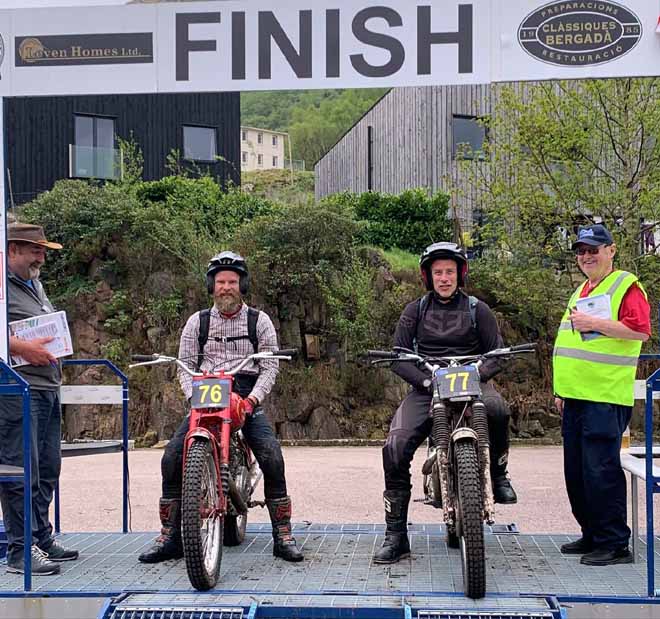
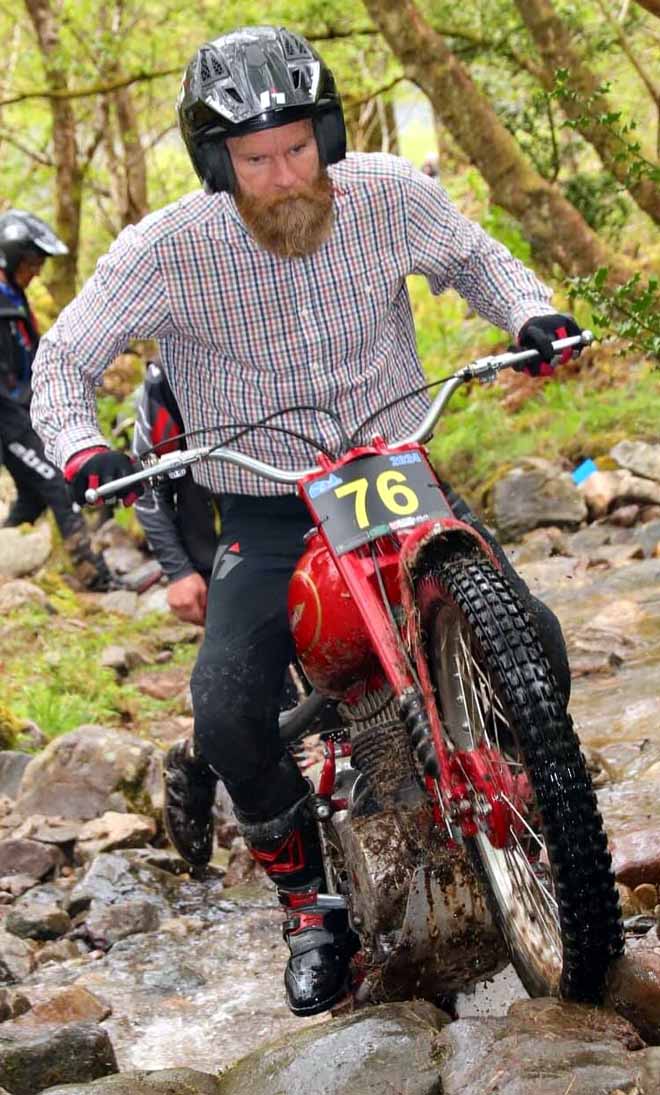
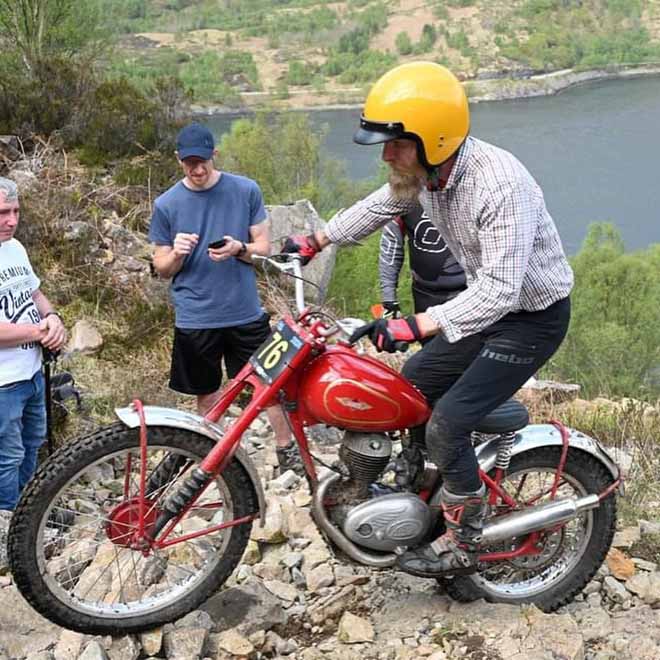
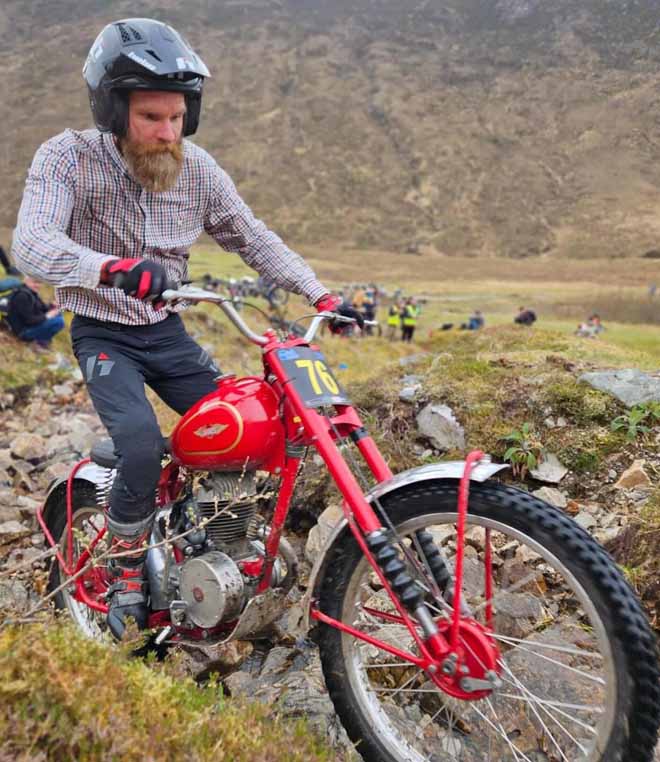
2024 Scottish Pre-65 (photos by Mike Tizard, Donald Young, John Hulme (Trial Magazine), Daisy Harwood)
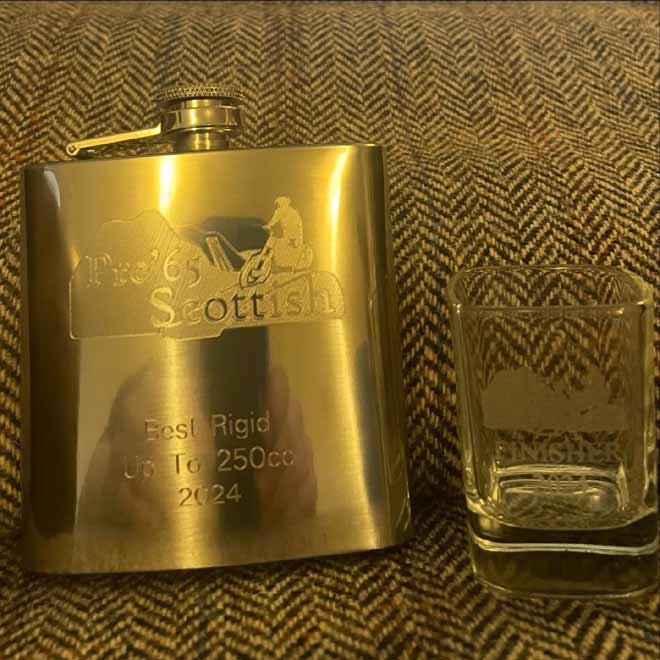
2024 Scottish pre-65: first rider on Rigid under 250cc
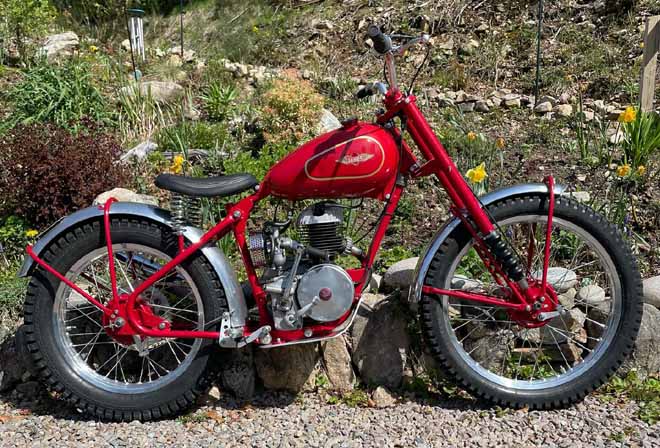
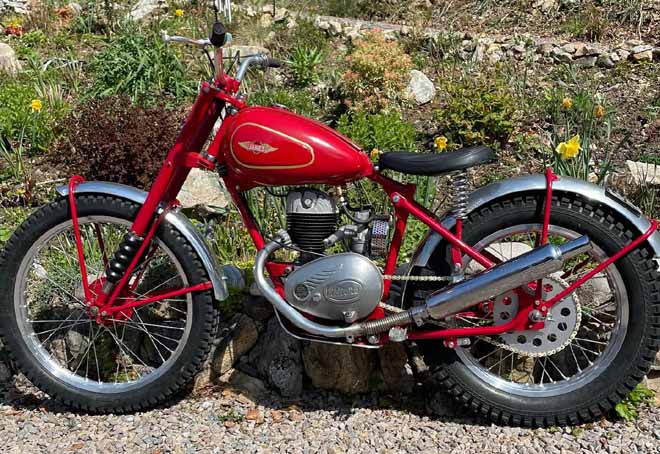
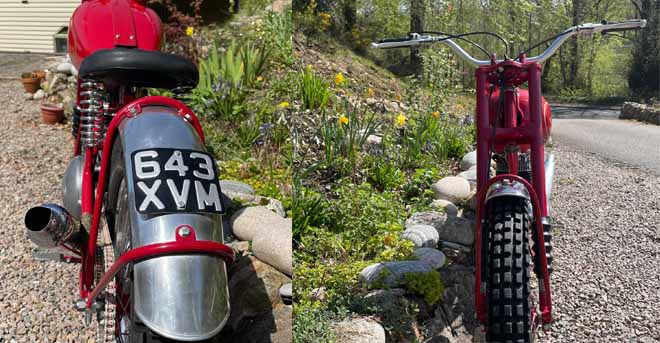
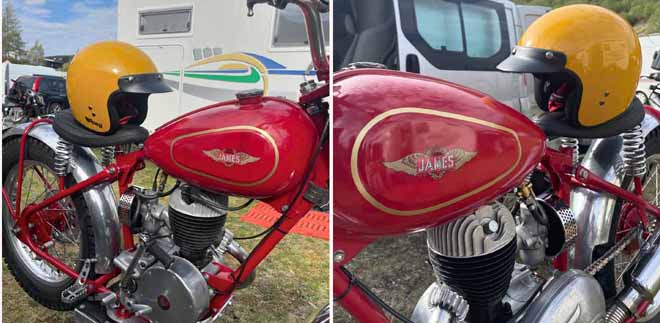
the 1953 James Captain Rigid (J9 Replica)
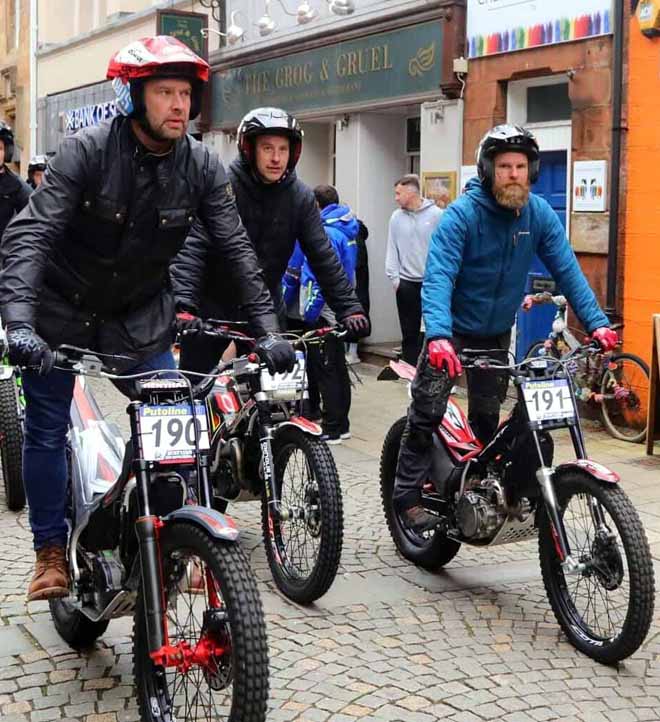
with Lee McGee (190) and Philip Wiffen (192) at the 2024 SSDT Parade (photo by Donald Young)
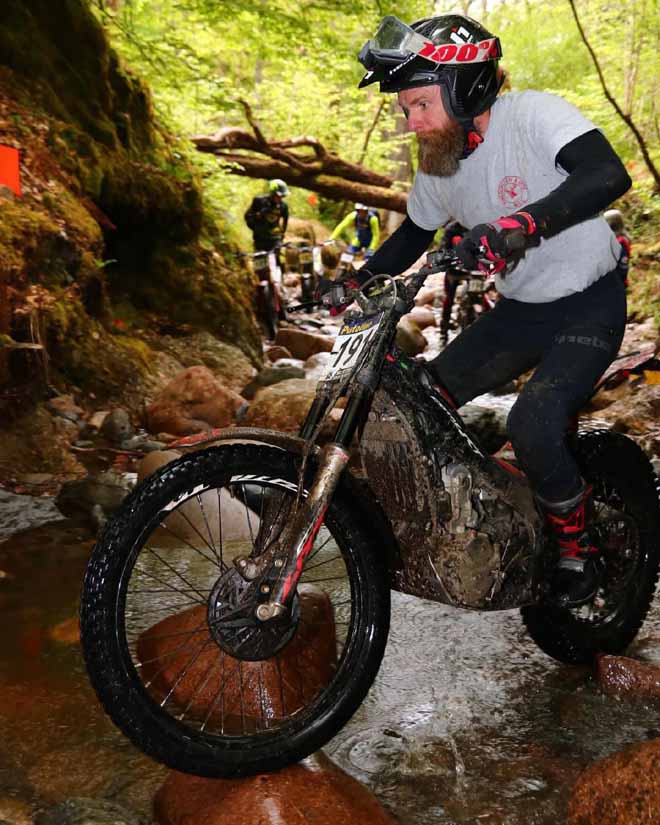
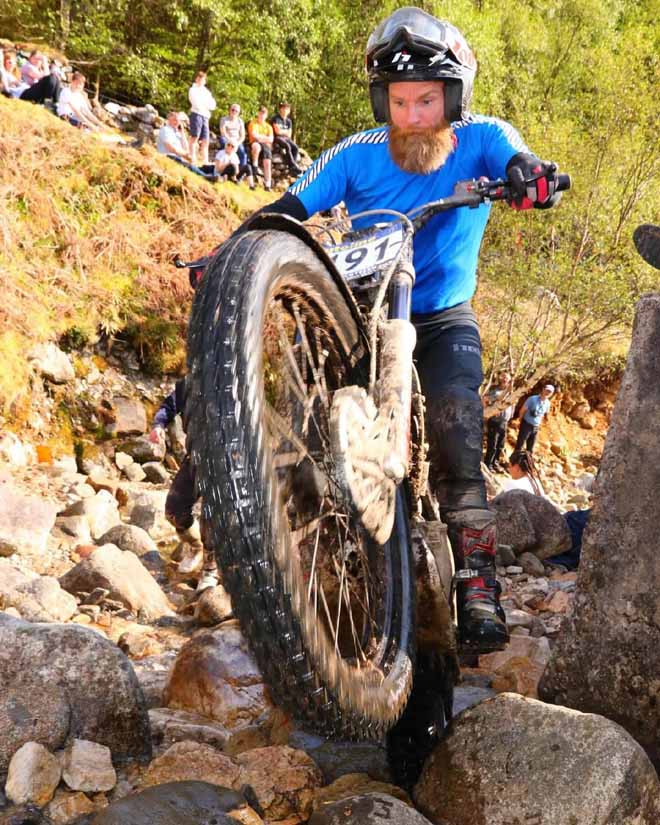
in action in 2024 SSDT on Montesa Cota 260 (by Donald Young)
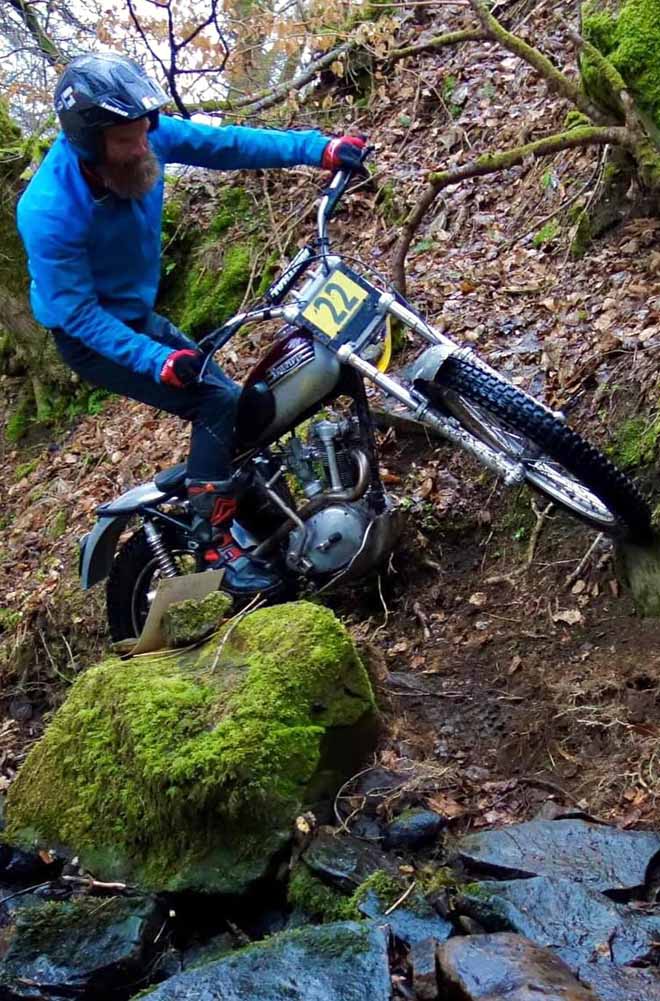
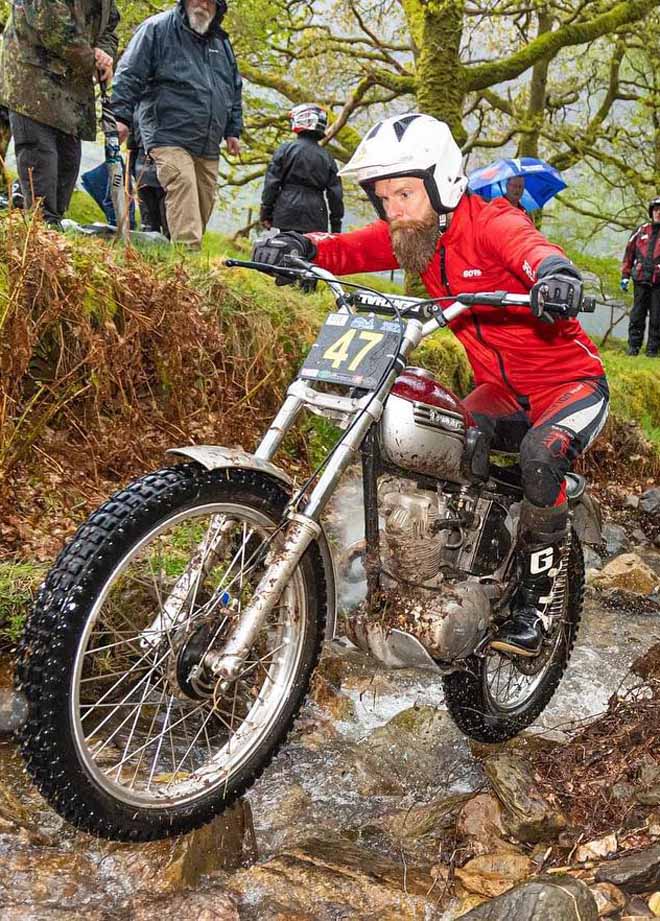
on Triumph Tiger Cub 200 in other 2 editions of Scottish pre-65
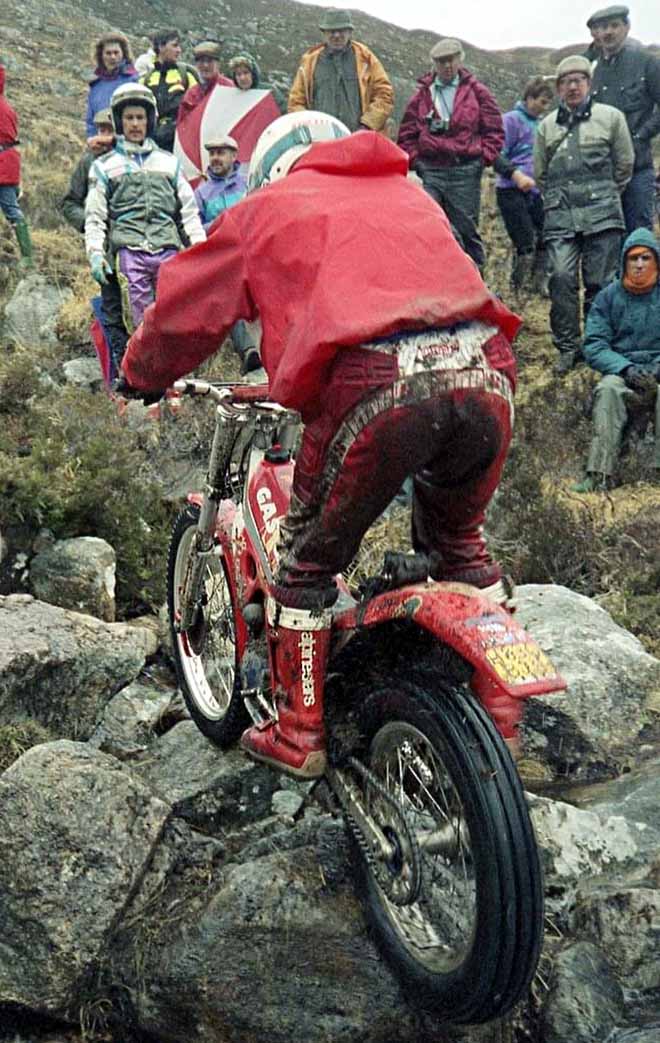
his first SSDT on Gas Gas (by Iain Lawrie)
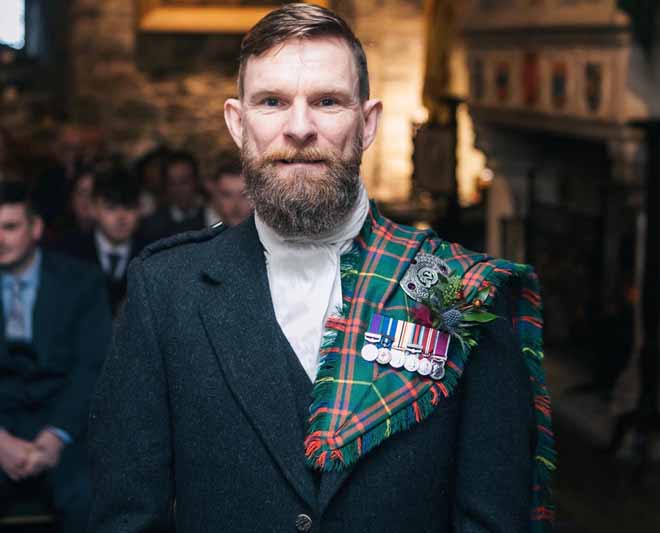
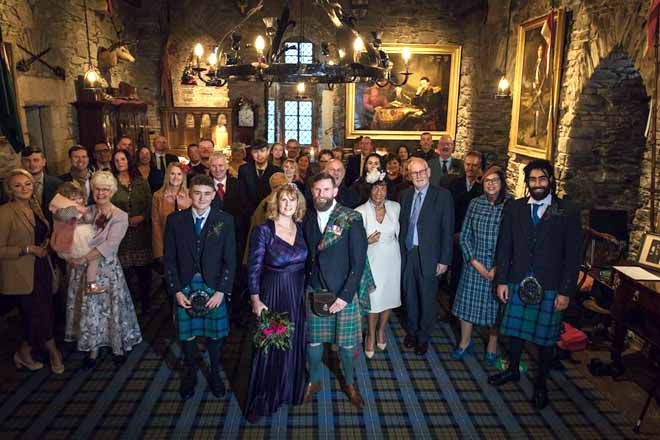
at his second wedding (photo by Love Skye Photography)

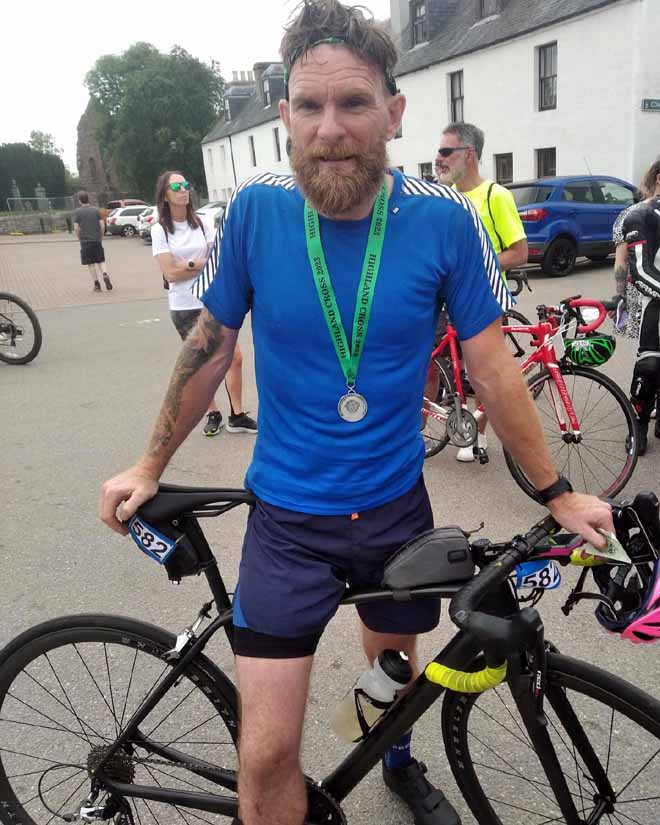
practising other sports
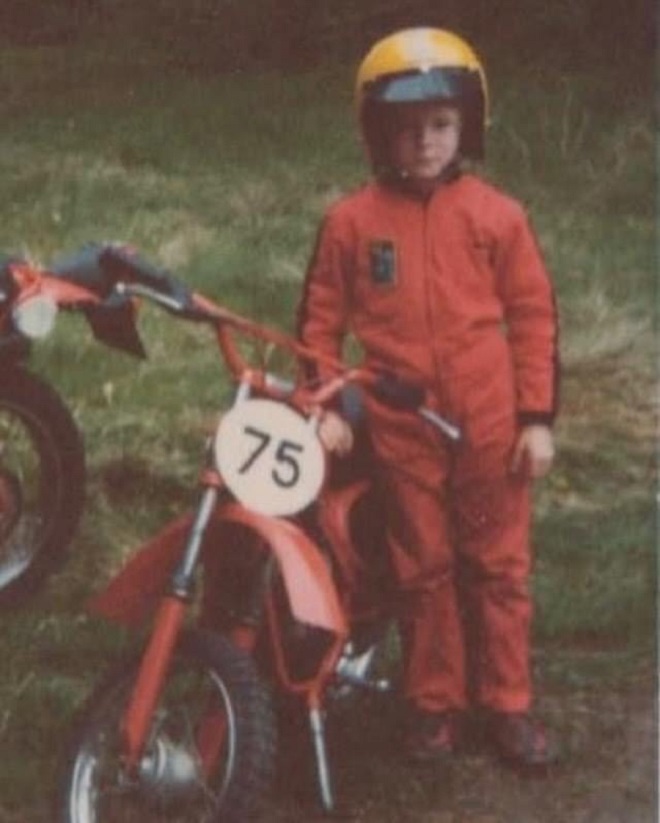
with his first bike, note the colour of the helmet, the same painted by him at the latest pre65 race!
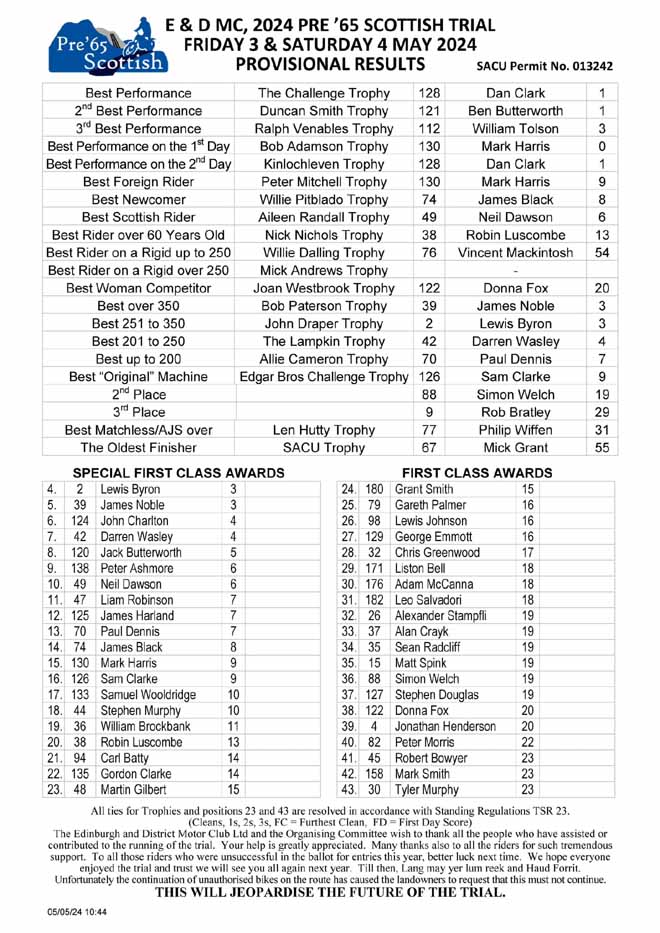
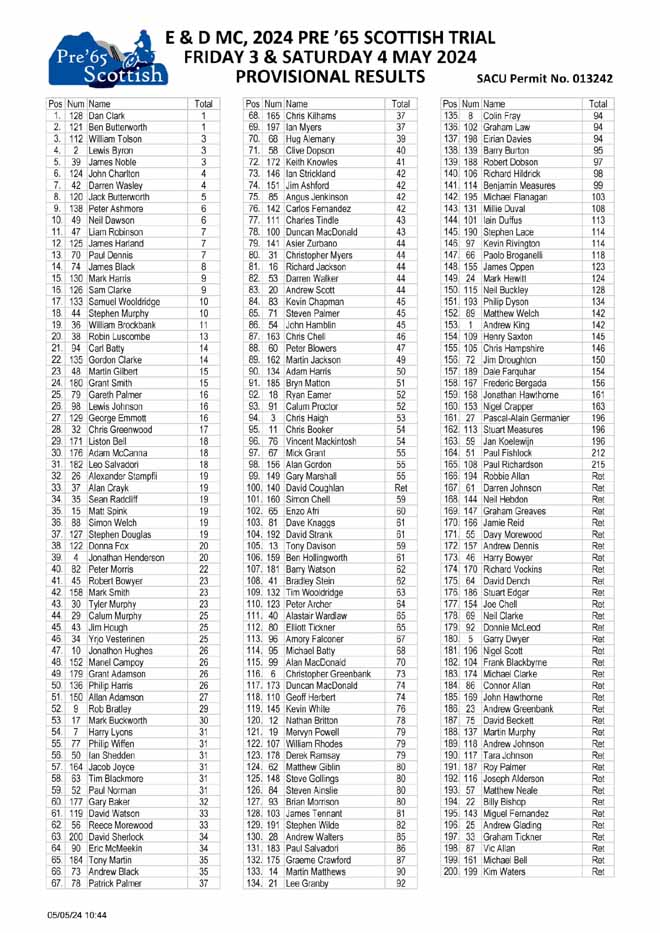
2024 Scottish pre65 results
---------------------------------------------------------------------------------------

